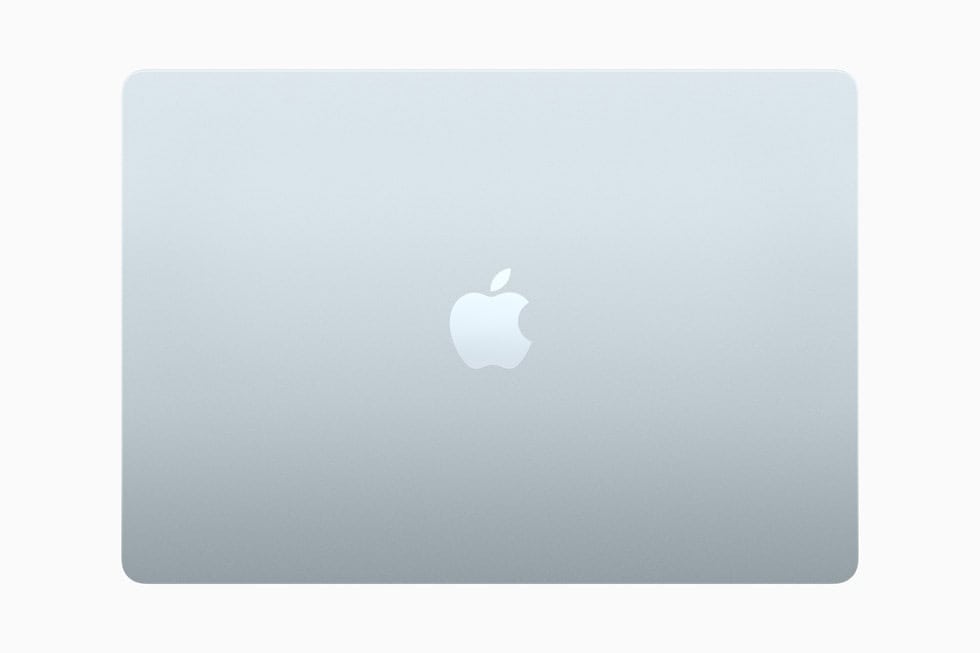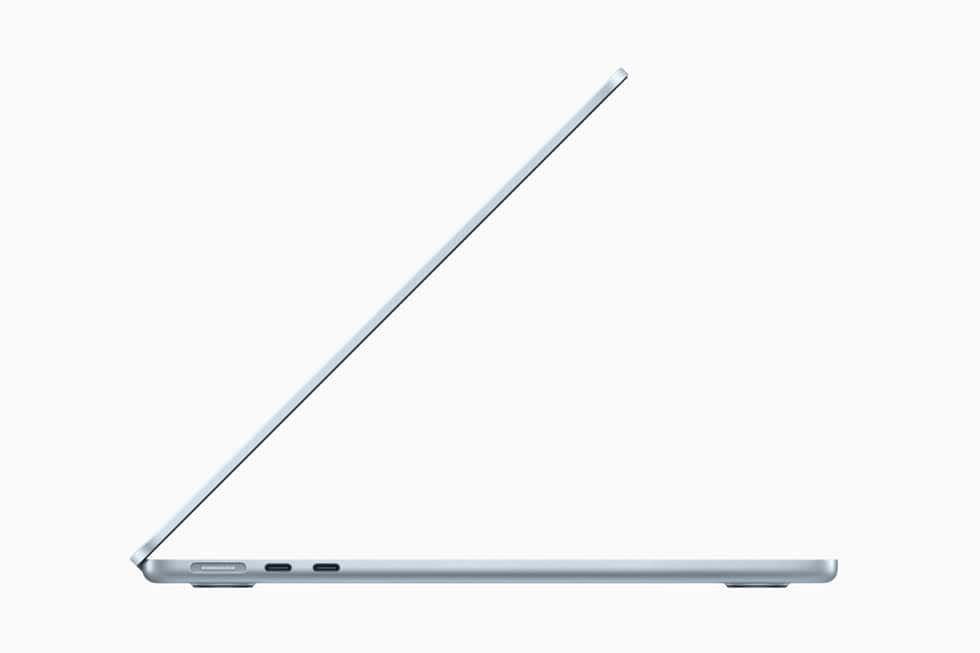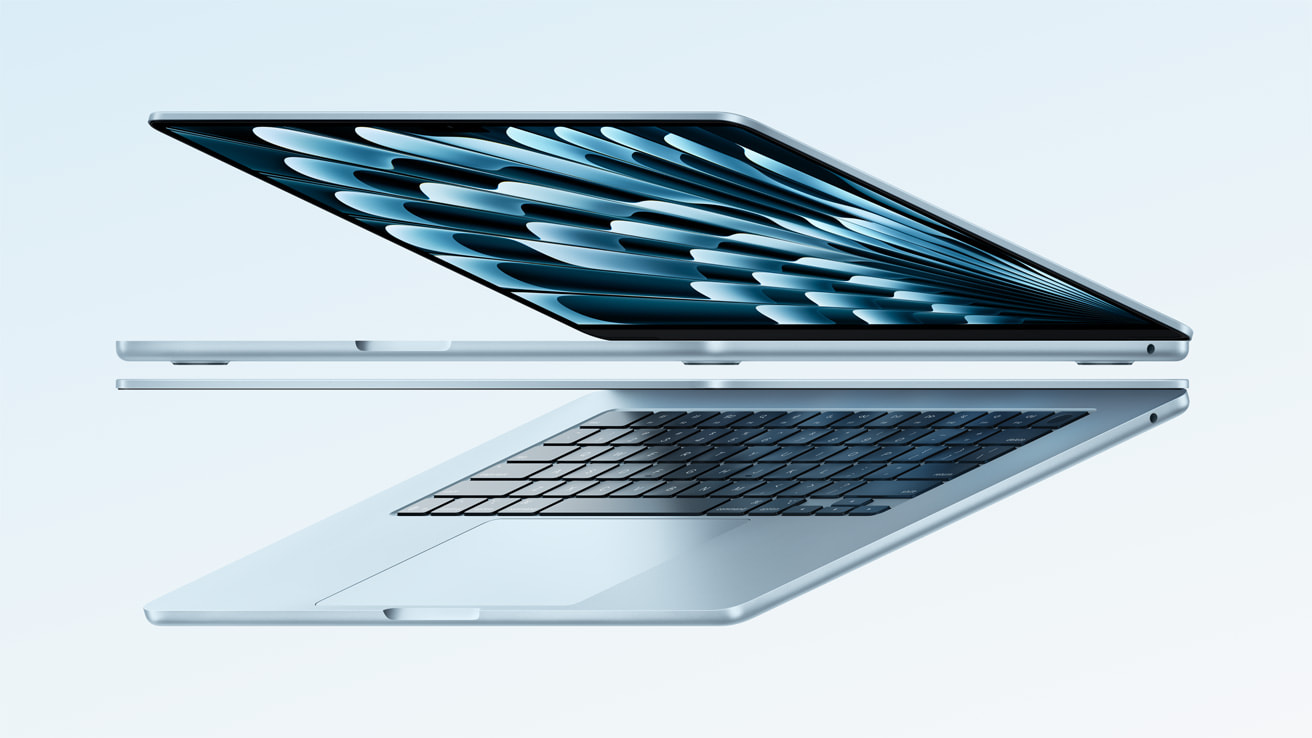Apple’s latest pricing strategy for the M4 MacBook Air is turning heads in the tech industry. In a surprising move, Apple has announced that its newest M4-powered MacBook Air models will start at $999 for the 13-inch version and $1,199 for the 15-inch model—a $100 price drop from their M3 predecessors.
At a time when many laptop manufacturers are raising prices due to supply chain constraints and inflation, Apple’s decision to lower prices bucks industry trends and raises key questions about the company’s broader strategy.
And this move has people talking – does Apple know (or have a guarantee) that they will be exempt from tariffs?
Why Is Apple Cutting Prices When Competitors Are Raising Them?

Apple’s price cut comes just weeks after a new 10% tariff on Chinese-made semiconductors and tech products was imposed by the Biden administration, reigniting concerns over rising costs in the electronics sector. Typically, such tariffs result in higher consumer prices, yet Apple seems to be moving in the opposite direction.
This raises speculation that Apple expects to avoid these tariffs, giving it a competitive edge over other PC manufacturers that may be forced to raise their prices. Reports suggest that President Donald Trump has taken credit for a deal that could exempt Apple from certain tariffs while leaving other laptop makers, including Dell, HP, and Lenovo, subject to them. While there’s no official confirmation from Apple regarding tariff exemptions, the timing of the price cut suggests the company is confident it won’t be hit by the same cost increases as its rivals.
Apple’s Secret Weapon: Supply Chain Control
Apple’s ability to cut prices while others struggle may also be attributed to its supply chain dominance. The company has spent years diversifying its production away from China, with significant investments in India and Vietnam. Reports indicate that a large portion of M-series chip production has already been shifted to TSMC (Taiwan Semiconductor Manufacturing Company), reducing dependence on China-based semiconductor manufacturers that are most affected by tariffs.
Additionally, Apple has deep supplier contracts and long-term agreements that allow it to negotiate better pricing, absorbing cost increases that might otherwise be passed on to consumers. This contrasts with competitors like Microsoft, which relies on a mix of third-party hardware manufacturers who lack Apple’s scale to absorb cost fluctuations.

A Win for Consumers—But Will It Last?
For consumers, Apple’s price drop is a rare win, making cutting-edge M4 performance more accessible. The M4 chip, rumored to bring significant AI processing power improvements, is expected to power upcoming MacBook Pro and iPad Pro models, reinforcing Apple’s shift toward AI-driven computing.
Apple’s education pricing makes the deal even sweeter—students and educators can get the new M4 MacBook Air for just $899, potentially increasing Apple’s dominance in the education sector, where Chromebooks have long been a budget-friendly alternative.
However, Apple’s pricing strategy may not last forever. If tariff exemptions change or if supply chain costs rise, future MacBook models could see price increases. Apple’s ability to maintain this price advantage will depend on whether it can continue sidestepping trade restrictions and sustain its efficient supply chain management.
Key Takeaways
- Apple’s M4 MacBook Air starts at $100 less than the previous generation despite industry trends toward price increases.
- The price reduction might indicate Apple’s confidence in avoiding tariffs that could affect competitors.
- Education customers benefit from even lower pricing at $899, making Apple’s latest technology more accessible.
Analysis of Apple’s Pricing Strategy
Apple’s unprecedented M4 MacBook Air price cut is more than just a marketing move—it’s a strategic play that signals confidence in its ability to avoid costly tariffs, leverage its supply chain efficiency, and gain an edge over competitors. Whether Apple has secured an official exemption or is simply hedging against future tariffs, one thing is clear: consumers looking for premium performance at a lower price might want to act fast before economic conditions shift.
Apple’s decision to reduce the M4 MacBook Air price by $100 represents a strategic move in a market facing upward price pressures. This pricing choice may indicate Apple’s unique position regarding tariffs and demonstrates their continued focus on product differentiation.
Impact of Tariff Exemptions on Apple
Apple appears to be positioning itself differently from competitors regarding the upcoming US Silicon Tariffs. While these tariffs are expected to increase tech hardware prices by up to 40%, Apple’s price reduction suggests they may have secured exemptions or found alternative solutions.
The company has historically wielded significant leverage over suppliers. According to search results, “Apple can refuse to have tariff costs passed on to it” due to this leverage. This advantage allows Apple to maintain or even reduce prices while competitors struggle with increased costs.
Tim Cook’s recent cryptic social media post about a new Air device may be strategically timed to highlight Apple’s ability to navigate tariff challenges better than competitors. This pricing move could strengthen Apple’s market position during economic uncertainty.
Comparison to Other Notebook Manufacturers
Other notebook manufacturers are raising prices in response to tariff pressures, creating a stark contrast with Apple’s approach. The $100 price reduction on the M4 MacBook Air puts Apple in a uniquely competitive position.
For consumers, the difference is significant. While other notebooks may see price increases of 20% or more, Apple is moving in the opposite direction. A Reddit user noted that a 20% tariff increase would push a MacBook from $1099 (with student discount) to around $1300.
Apple’s product differentiation strategy allows them to maintain premium pricing while still appearing to offer increased value. By reducing prices when competitors cannot, Apple enhances the perceived value proposition of their products.
This pricing divergence may increase Apple’s market share as price-conscious consumers find the relative gap between Apple and competitors narrowing, making Apple’s premium offerings more attractive in comparison.
Implications for the Tech Industry
Apple’s reduced pricing strategy for the M4 MacBook Air creates ripples throughout the tech industry, challenging competitors and potentially signaling Apple’s confidence in navigating tariff challenges that affect other manufacturers.
Market Response to M4 MacBook Air Pricing
The tech industry has responded with surprise to Apple’s decision to lower MacBook Air prices by $100 during a period when most manufacturers are raising prices. This move positions Apple favorably against competitors who are struggling with potential tariff increases of up to 40% on tech hardware.
Investors are watching closely, as Apple’s stock may benefit from this aggressive pricing strategy. The company appears to be leveraging its supply chain efficiency and vertical integration to maintain margins while offering better value.
Competitors like Dell, HP, and Lenovo might face increased pressure to match Apple’s pricing or risk losing market share in the premium laptop segment. This creates a challenging environment for Windows laptop manufacturers who lack Apple’s silicon advantage.
Predictions for Future Pricing Trends
Industry analysts predict Apple’s pricing strategy could force other manufacturers to absorb tariff costs rather than passing them entirely to consumers. This would compress profit margins across the industry but potentially stabilize consumer prices.
The M4 MacBook Air pricing might indicate Apple’s confidence in securing tariff exemptions or special arrangements. If true, this would create an uneven playing field in the laptop market.
Future product cycles may see competitors investing more in vertical integration and custom silicon to match Apple’s cost efficiencies. Companies without such capabilities might pivot toward niche markets or value-added services.
The lower entry price of $999 ($899 for education) could also expand Apple’s market reach, particularly in budget-conscious segments like education and small businesses that previously found MacBooks too expensive.
Frequently Asked Questions
Apple’s pricing decision for the M4 MacBook Air raises several important questions about market positioning and economic factors. The company’s unexpected price reduction comes at a time when industry trends are moving in the opposite direction.
How has Apple adjusted the pricing of their new M4 MacBook Air compared to the previous model?
Apple has reduced the price of the entry-level M4 MacBook Air by $100 compared to its M3 predecessor. This price cut represents a notable departure from typical new product releases, where prices often remain steady or increase slightly.
The starting price reduction makes the new M4 model more accessible to consumers while offering improved performance specifications. This move comes at a time when technology costs are generally rising across the industry.
What implications do Apple’s pricing strategies suggest about their position on tariffs?
Apple’s ability to lower prices while others raise them suggests the company may have secured favorable trade arrangements. Industry analysts speculate that Apple might have negotiated exemptions from some of the tariffs affecting other manufacturers.
President Trump has previously taken credit for deals with Apple, which could indicate special considerations for the company. This pricing strategy may reflect Apple’s confidence in their supply chain stability despite global economic pressures.
Are other notebook manufacturers increasing their prices, and how does this compare to Apple’s pricing strategy?
While Apple reduces prices, most laptop manufacturers are implementing price increases across their product lines. These competitors are responding to rising component costs, supply chain disruptions, and tariff impacts.
Apple’s contrasting approach highlights their unique market position and possibly their supply chain advantages. The $100 reduction creates a more pronounced value proposition when viewed against the rising prices of competing products.
What factors may have contributed to Apple’s ability to reduce the price of their new MacBook Air?
Apple’s vertical integration and control over key components likely contribute to their pricing flexibility. Their scale of production creates economies that smaller manufacturers cannot match.
The company’s relationship with suppliers and manufacturing partners may have secured preferential rates. Additionally, Apple’s cash reserves allow them to absorb short-term cost increases that might force other companies to raise prices immediately.
Has Apple released any statements regarding their pricing strategy for the new MacBook Air in relation to global economic changes?
Apple has not made explicit statements connecting their pricing strategy to tariff exemptions or trade policies. The company typically maintains discretion regarding the specific factors influencing their pricing decisions.
Public communications have instead focused on the value proposition and technical improvements of the M4 MacBook Air. Apple executives have emphasized performance enhancements rather than explaining the economic reasoning behind the price reduction.
How does the new pricing of the M4 MacBook Air fit into the overall trend in consumer electronics pricing?
The M4 MacBook Air’s price reduction runs counter to the prevailing trend of increasing costs across consumer electronics. Most technology products are experiencing upward price pressure due to component shortages and global economic factors.
This divergence positions Apple’s products as potentially more attractive to price-sensitive consumers. The timing of this price reduction could help Apple gain market share while competitors struggle with price increases that may alienate customers.







